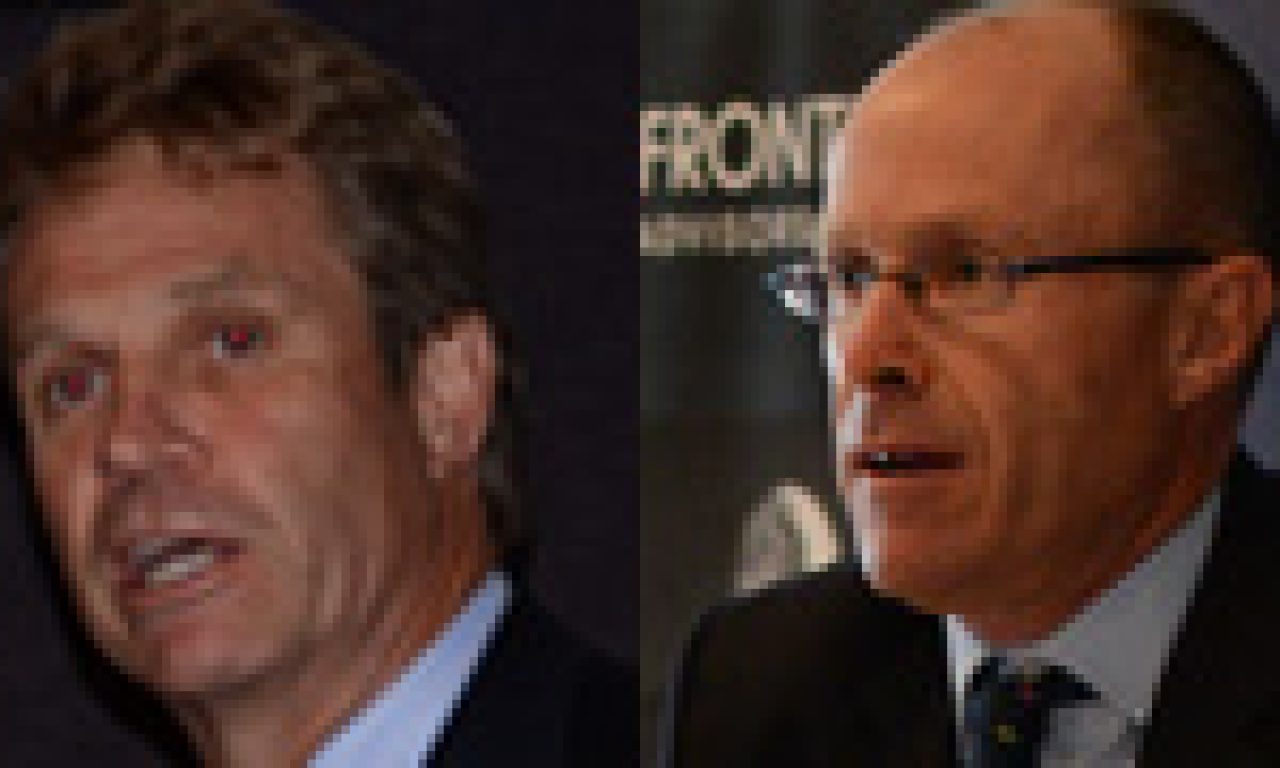Chris Cuff and John Sevior
Chris Cuffe, who built Colonial First State into a retail powerhouse before moving to the “other side” as chairman of UniSuper, has raised serious questions about the future structure of the wealth management industry over the next two-to-three years.
Speaking at the Frontier Advisors conference, he queried the future of the banks’ financial advice operations and said costs of superannuation had to be reduced even further.
From average MER levels of around 0.78 per cent in 2014, Cuffe said super funds had to prepare for much lower MERs, perhaps to half current levels. “Get you MERs down … [so] there’s a 4 in front,” he advised.
He forecast that industry funds would expand and improve their financial advice, employing salaried professionals. He said their policy of managing more investments internally (with fixed costs for staff) should enable their costs to be lowered .In addition, the lack of a need for profit margins in “profits for members” funds was an advantage when retail funds had much higher profit margins.
Against this background (and with the scandals in banks’ advisory networks) he wondered why some banks should have a financial planning arm any more.
Cuffe began in the investment world in 1988 after he decided that work as an accountant was boring and by 1990 he was chief executive of the burgeoning Colonial First State group, taking it from a virtual start-up to Australia’s largest investment manager before moving to the Challenger group in 2003.
By 2006, he was “physically exhausted” and wanted to escape the “vortex” in the job. He moved into non-profit area with Social Ventures Australia and now devotes roughly half his time to investment (including chairing the UniSuper board) and half to charities.
Some of Cuffe’s other reflections after 27years in the field included: Investment life in the early 1980s – “none of us knew what was coming.” There were almost no rules of investment. “It was just seat of the pants stuff.”
His biggest lesson – “That I knew less than what I thought.” Over time, ”experience is knowing where the land mines are.”
Another investment legend, stock picker John Sevior, had earlier contemplated the current investment landscape for land mines and pronounced it one of the most uncomfortable periods in his 20-plus years of investing.
He said the valuations of stocks had been elevated at a time when the world was going into a “tricky economic environment” where we did not know the results of extended, unconventional monetary policy.
Sevior queried what Australian investors had learned from the escape from the worst of the GFC – we escaped an internal crisis and were bailed out by Chinese demand for our materials.
“That’s what disturbs me; Australian investment management hasn’t faced a crisis for 23 years – or a generation,” Sevior said.
On the hesitation by business to expand or make acquisitions, he said the spread of possible outcomes had changed – as a result of threatened digital disruptions – from “possibly bad to okay” to “very good to disastrous”.
On the vexed question of asset valuations, Sevoir was in the Warren Buffett camp: share valuations look high, relative to history, if interest rates rise. “But if rates remain low, [shares] are probably the last game in town,” he said.
– Barrie Dunstan

